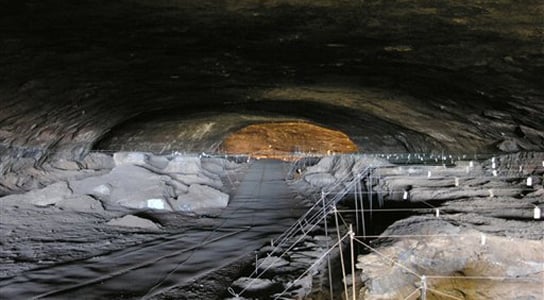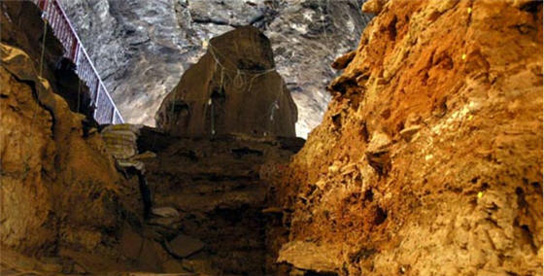
Ash was discovered in a South African cave, and this indicates that humans were cooking with fire one million years ago. This is the earliest use of fire but experts say that more proof is needed to conclude that humans were cooking with fire regularly.
Francesco Berna, an archaeologist, at Boston University in Massachusetts, and his team found ash that was composed of burnt grass, leaves, brush, and bone fragments in sediments 30 meters deep inside Wonderwerk Cave, in Northern Cape, South Africa. This cave is one of the oldest known sites of human habitation and shows traces of having been lived in from almost two million years ago.

For now, it’s impossible to say for certain which species of hominin inhabited the cave one million years ago, but clues indicate that it was probably Homo erectus. The ash was well preserved and has jagged edges, implying that it was not burned elsewhere or blown into the cave, which is usually indicated by worn edges.
There were no traces of bat guano, which led the researchers to conclude that the fire was created by hominins and not started inadvertently by nature. They published their findings in the journal Proceedings of the National Academy of Sciences.
The first humans used cooking to make food easier to chew and digest. This allowed them to get more energy from the same amount of food, and spend less time foraging. It has been difficult to pinpoint the exact period when humans made this leap.

Evidence of burning is quickly and easily destroyed by erosion. Other burned remains have been dated 1 million to 1.5 million years ago, in Swartkrans in South Africa, and 700,000 to 800,000 years ago in Gesher Benot Ya`aqov but both of these sites were exposed, implying that lightning could have ignited these fires. This would have been impossible in the Wonderwerk Cave.
The earliest unequivocal evidence for fire-making, cooking, and hearths dates back 400,000 years. Further searches are needed to prove that hominins used fire in this way to equivocally conclude that fire was in use one million years ago.
Reference: “Microstratigraphic evidence of in situ fire in the Acheulean strata of Wonderwerk Cave, Northern Cape province, South Africa” by Francesco Berna, Paul Goldberg, Liora Kolska Horwitz, James Brink, Sharon Holt, Marion Bamford and Michael Chazan, 2 April 2022, Proceedings of the National Academy of Sciences.
DOI: 10.1073/pnas.1117620109
4 Comments
It is impossible for humans ,that too known for their cooking talents to have lived 2 million years ago.. It could be remnants of forest burns. Thank You.
Forest burns? In a cave? Idiot, free yourself.
Hello! stupid big mouthie! The article states that a million year old ashes were found in the cave. No scientist will conclude from a single result in observation. Do you know that then only ‘HOMO ERECTUS’ a species like monkeys were living in that period about a million years ago.We belong to HOMO SAPIENS, genre. NO fool will say that forest burns happened inside the caves unless it is physically carried there. Monkeys are capable of carrying the fire stick anywhere. The ancient human ancestor “china man” is only one hundred thousand years old. The man who knew the usage of fire came only later on during old stonage people. You can even stupidly imagine that even Dinosaurs which lived 25 millions years ago knew the usage of fire for cooking. Monkeys don’t need cooked food and Monkeys need not know everything that homo sapiens do.Thank You.
But some imbeciles and extreme idiots think that The World exists for NO MORE than…. 5000 years. Why nature produces such idiots??????